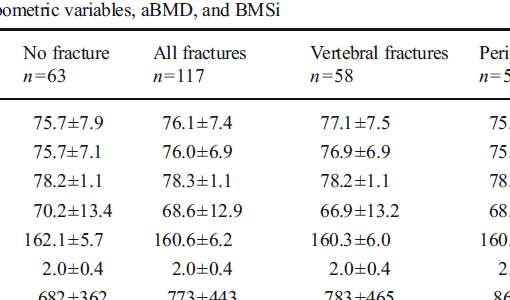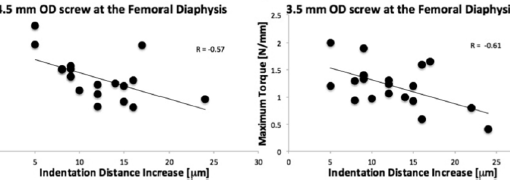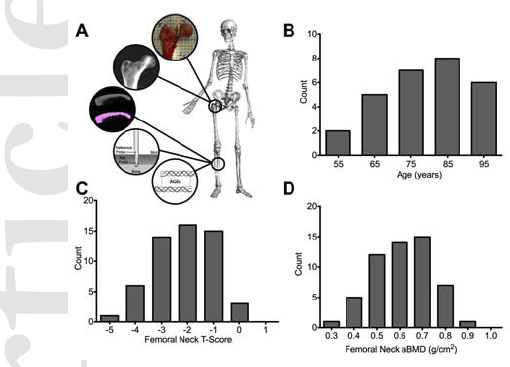Abstract
Although low bone mineral density (BMD) is strongly associated with increased fracture risk, up to 50% of those who suffer fractures are not detected as high-risk patients by BMD testing. Thus, new approaches may improve identification of those at increased risk for fracture by in vivo assessment of altered bone tissue properties, which may contribute to skeletal fragility. Recently developed reference point indentation (RPI) allows for assessment of cortical bone indentation properties in vivo using devices that apply cyclic loading or impact loading, but there is little information available to assist with interpretation of RPI measurements. Our goals were to use human cadaveric tibia to determine: 1) the associations between RPI variables, cortical bone density, and morphology; 2) the association between variables obtained from RPI systems using cyclic, slow loading versus a single impact load; and 3) age-related differences in RPI variables. We obtained 20 human tibia and femur pairs from female donors (53-97years), measured total hip BMD using dual-energy X-ray absorptiometry, assessed tibial cortical microarchitecture using high-resolution peripheral quantitative computed tomography (HR-pQCT), and assessed cortical bone indentation properties at the mid-tibial diaphysis using both the cyclic and impact-based RPI systems (Biodent and Osteoprobe, respectively, Active Life Scientific, Santa Barbara, CA). We found a few weak associations between RPI variables, BMD, and cortical geometry; a few weak associations between measurements obtained by the two RPI systems; and no age-related differences in RPI variables. Our findings indicate that in cadaveric tibia from older women RPI measurements are largely independent of age, femoral BMD, and cortical geometry. Furthermore, measurements from the cyclic and impact loading RPI devices are weakly related to each other, indicating that each device reflects different aspects of cortical bone indentation properties.
https://www.ncbi.nlm.nih.gov/pubmed/25862290
Bone. 2018 Jan;106:90-95. doi: 10.1016/j.bone.2015.03.021. Epub 2015 Apr 7.




